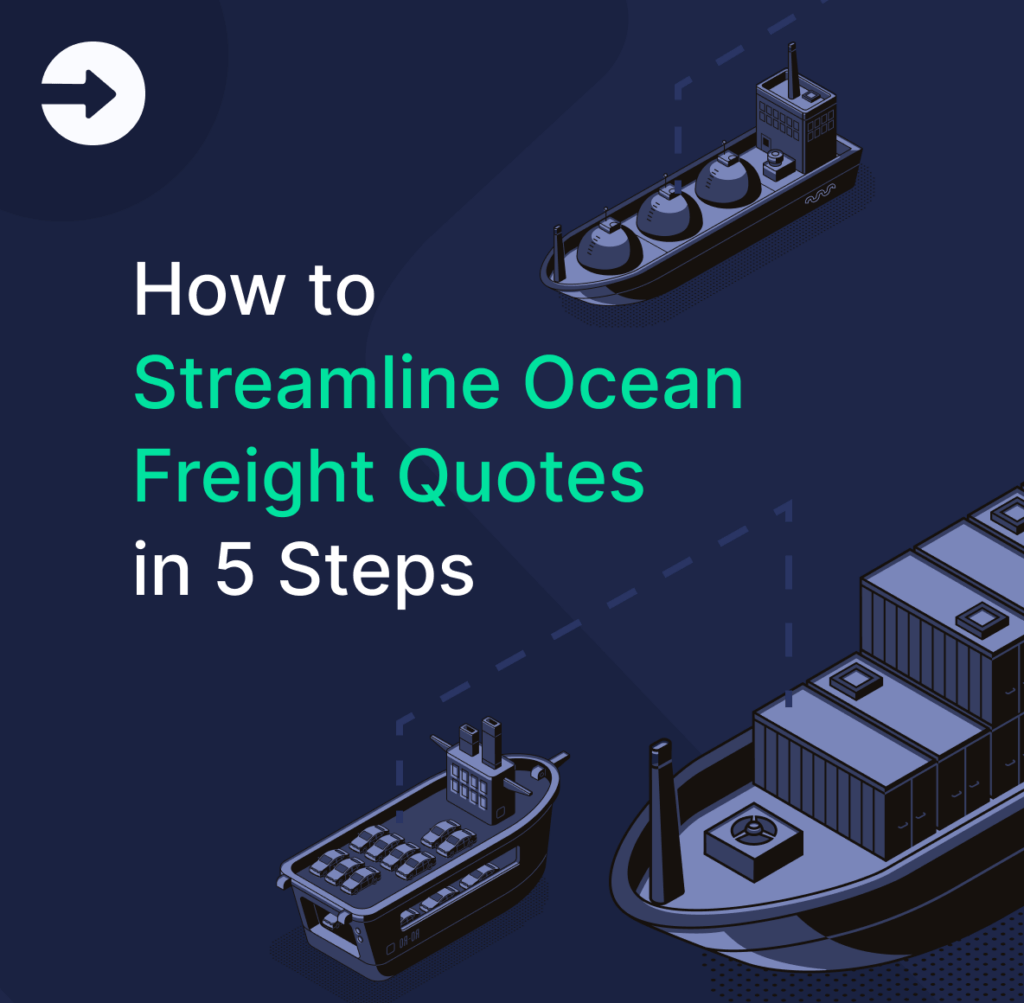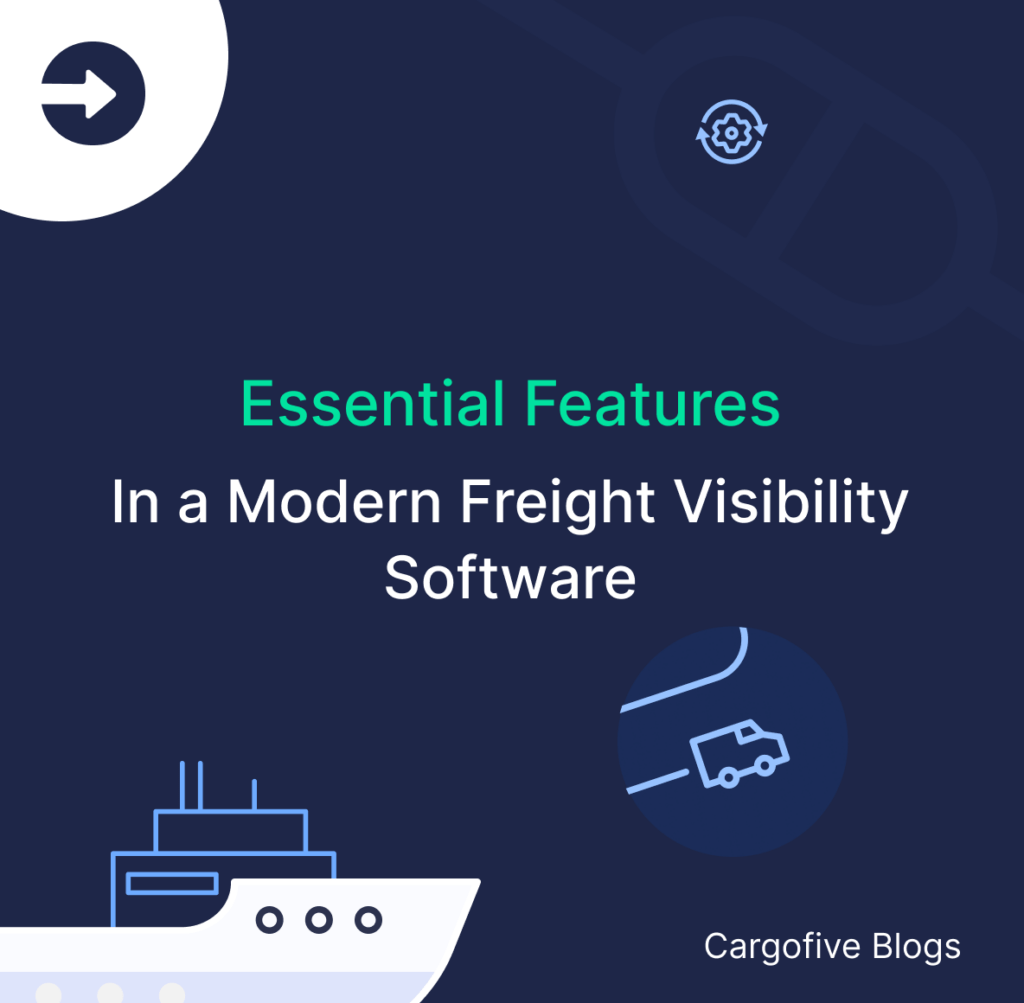In this constantly evolving world, change is inevitable. Nowadays, digital transformation in all types of business and industries is unstoppable. We now see more and more freight forwarders starting this path as well as technological enterprises that have accelerated change in this industry. It is time to adapt and evolve, but do you know at least how to start a freight forwarder’s digital transformation? This is precisely what we’re going to talk about.
A freight forwarder’s digital transformation may sound a bit complicated if we think about its very traditional internal processes. However, there are already many freight forwarders facing digital transformation and driving logistics industry to growth.
This means there is no way back, logistics business is going all digital. Sooner or later everything will be automated, so those who don’t adapt to it will sadly stay in the past.
Freight forwarders are now at a crossroad: innovate to survive or face extinction. Choosing option A, the company embraces innovation and establishes itself as a digital player. Choosing option B, the company perishes as the other ones take over the market.
This, of course, makes freight forwarders regard technology as a lifeline (option A) or as an enemy (option B). The ones choosing the digital path become strategic partners with shippers. Meanwhile, the other ones earn lower margins and face commoditization as their competitors count on improved technology and offer a better service with lower costs.
Smaller freight forwarders are the most likely to choose option B, mainly because of the lack of digital know-how (50%) and capital (38%). Therefore, the lack of strategic partnership and vision will push the global market share enjoyed by multinationals from 60% to nearly 90%.
So, what about you? Are you team stepping forward to digitalization or team staying in your comfort zone and losing opportunities? If your answer is team A, then welcome aboard! You are at the right place.
Starting a freight forwarder’s digital transformation is easier than it seems.
It is only a matter of being willing to change your mindset, set it as a goal and get to work for it. Once you decide to start the process, we suggest you follow these steps:
1. Study your freight forwarder:
- Take a look at the resources and digital tools you have, the processes, customers relationships and, mainly, how does all of that affect the company’s results.
- Identify the weaknesses to work on based on the information you collect. You can ask questions like: is there something taking a lot of time? What can be slowing down the business? Or, is it possible to optimize any process?
- Having that in mind, you can analyze your strategy to determine if you are including digital aspects. If so, then all that’s left to do is to define whether if they are in line with your business, processes and team members or if this should be worked on.
2. Study your external environment:
- You should always evaluate what are the others doing: your competition, the industry, and even other different business. It will give you a good idea of how your freight forwarder is positioned against the others, so you can identify what you have to work on.
- More important is to follow or replicate the advances and best practices you find, even if they are from another industry, you will always find something that gives you ideas to give your freight forwarder a boost.
3. Check out your digital strategy:
If you don’t have a digital strategy, then you must define it. If you do have one, you should evaluate it. Either way, you should keep in mind the following:
- Everything you develop from now on must be focused on customer experience, the client is placed at the center of your strategy.
- It is key to involve all of your workers, consider their needs and comments, as well as it is helping each one of them to be empowered of the business’ digital transformation. It is also very important to constantly train them and offer them all of the resources they need to do their job in the best way possible.
- Your freight forwarder must count on digital tools that help optimize the processes. For instance, you should use a software that helps to speed up the quoting process, like Cargofive’s.
- Digital and corporate strategies must be aligned. If they are not, the digital transformation may be more complicated, since there could be a lot of restrictions.
4. Plan and organize the implementation:
- Define and prioritize activities as projects, according to what was established on the digital strategy, starting at training, and then set up a budget to each one of them so you can manage your resources in a more efficient way.
- Designate roles and who is responsible for each part of the plan, everyone has to know their responsibility and reach. It is important to have one person to lead the freight forwarder’s digital transformation and the rest of the company towards it, in one direction only.
5. Put it in practice, measure and follow up:
- Once you have the plan, all that’s left is to put it in practice. Each worker must do its assignment to start the freight forwarder’s digital transformation.
- Throughout the whole process, you must measure the results to be able to identify what is working, what is not, what can be improved and what should be stopped. One of the most important benefits of digitalization is being able to save all the data you want so you can analyze your business performance constantly.
- Keep following up the implementation and the results so that you can make decisions at the right time to give your business a boost.
To be successful at the freight forwarder’s digital transformation, it is key to continuously train the staff and evaluate the whole environment, both internal and external. You should always analyze and identify what must be improved and work on it, keeping in mind the enterprise’s capacity and possibilities, of course. So, these steps actually become a cycle that should be active on a regular basis.
Definitely, if you want your freight forwarder to survive, you will have to adapt to new trends. Beyond digital transformation, it is key to understand that there is a new way of doing business that integrates physical and digital aspects. Once you learn to see with different eyes digitalization, what it actually means and how it benefits a lot, starting the transformation will be much easier and the results will be magnified. So, shall we start now?
AUTHOR



